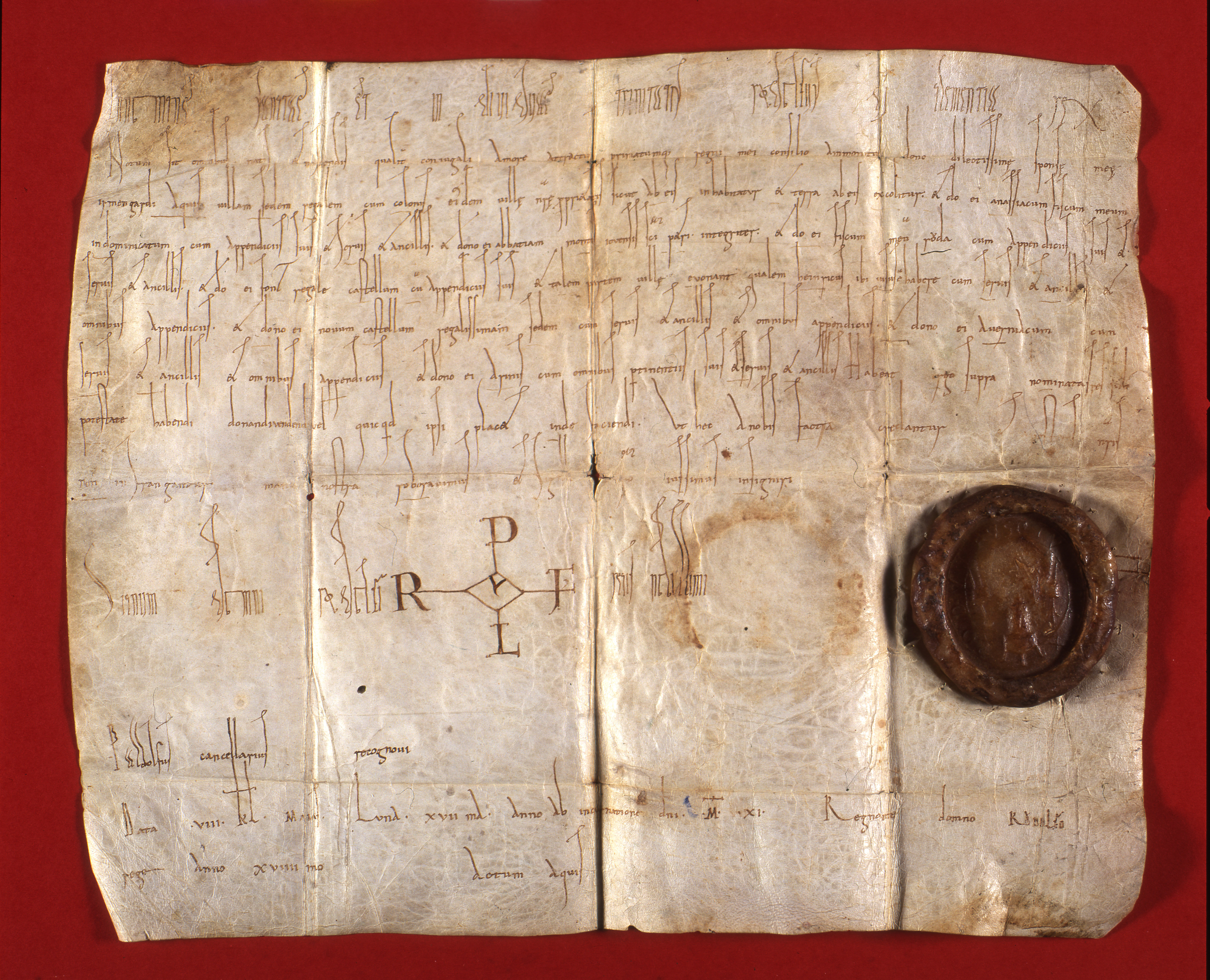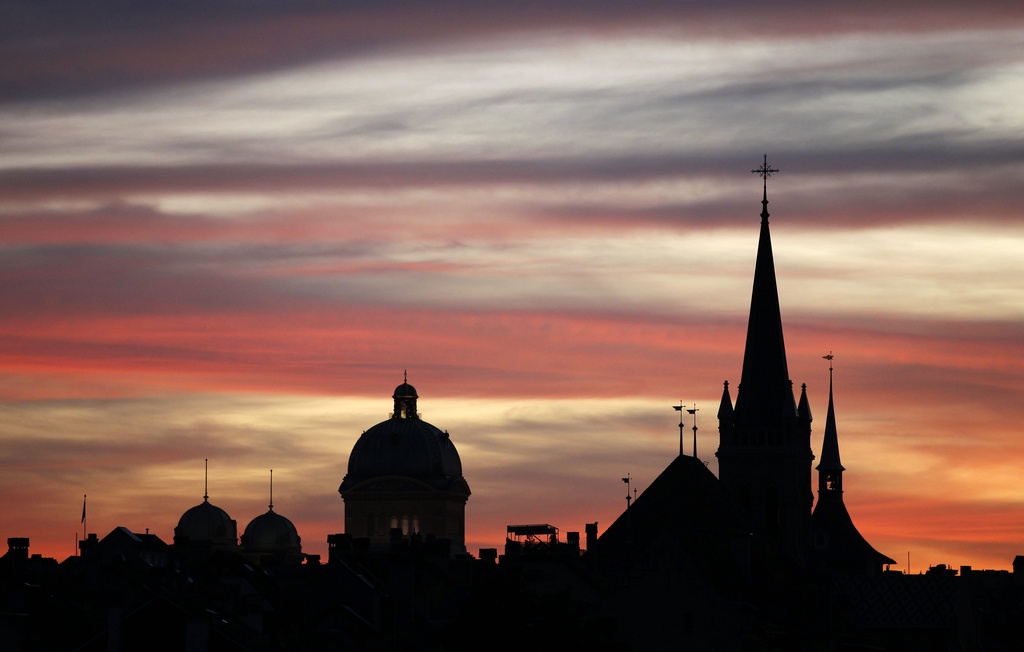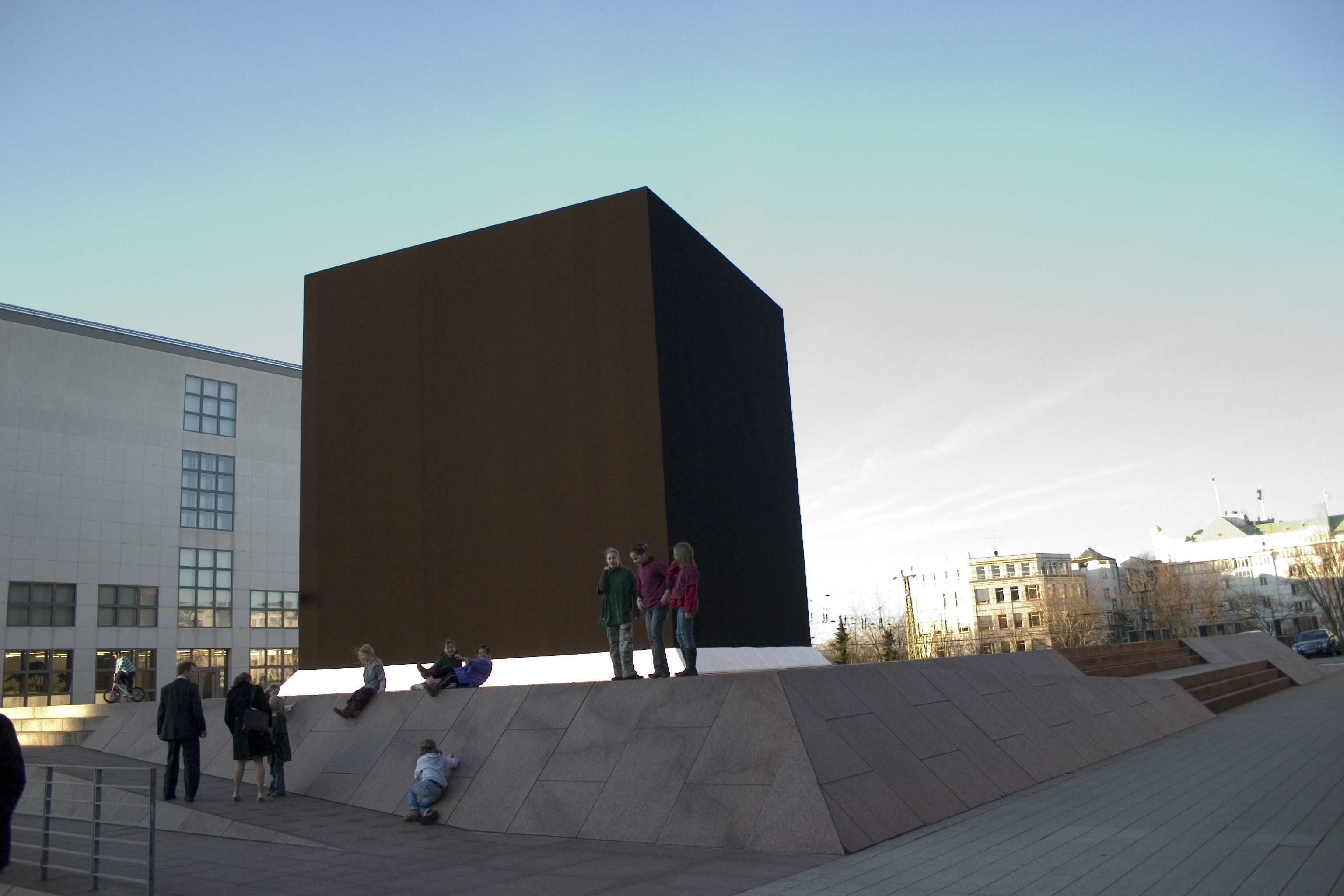Millennium party reflects on Neuchâtel identity

The launch of Neuchâtel’s five-month-long millennium celebrations on Friday will see the streets come alive with a light show and thousands of residents and artists.
But it is more than one big party for the residents of the lakeside mediaeval city in western Switzerland close to the Jura mountains. It is also a chance for people to revisit the past as part of a wider reflection on the city’s identity and future.
The Easter weekend is the start of a rich programme of festivities that includes over 40 major exhibitions, music, theatre and other cultural events, ending on September 25.
The idea of launching a party at Easter has not pleased everyone, however. Representatives from the local Protestant and Catholic churches regretted the “clumsy” choice of dates, but history was to blame.
April 24 was the date that Neuchâtel, originally known as Novum Castellum, was first mentioned in a written document in 1011.
At that time Rudolph III, King of Burgundy, signed a document handing over to his wife Irmengarde several properties and castles, including the “royal residence of Neuchâtel, with all its servants and its auxiliary buildings”.
“Let’s be clear that there were buildings at Neuchâtel well before 1011 but the first written mention is often taken as a reference,” Chantal Lafontant-Vallotton, curator of Neuchâtel’s art and history museum, told swissinfo.ch.
The rare original manuscript, on loan from France, is currently on display at the museum until May 1 as the highlight of a new exhibition on the city’s history and identity.
The exhibition poses the question, “What has made Neuchâtel what it is today?” The lake, Xamax football club, the Expo.02 national exhibition held there in 2002 or even local boy, Swiss Interior Minister Didier Burkhalter?
The exhibition touches on many other factors, however, including international trade in indienne printed and painted textiles, major bankers, participation in the slave trade, and the city’s religious influence during the Reformation and the Enlightenment; it was the origin of the first Protestant bible published in French.
French and Prussians
The museum visitor is taken back to 1011 when Neuchâtel was a small military garrison surrounding a simple castle. After the appointment of the first counts of Neuchâtel shortly afterwards, the territory officially became a city in 1214.
The County of Neuchâtel thrived for several centuries under French rule. At the beginning of the 17th century it became a principality but exceptionally future rulers were required to seek investiture from the citizens.
In 1707 following the death of Marie d’Orleans-Longueville, duchess of Nemours and princess of Neuchâtel, residents ended French control by electing a new Protestant prince, King Frederick I of Prussia, who would protect them but was based far enough away to leave them in peace.
Neuchâtel then entered its golden age, with trade, manufacturing, especially watch making, and banking experiencing steady growth.
During the first half of the 19th century, Neuchâtel belonged to the King of Prussia. Republicans pushed the region to join other Swiss cantons but royalists opposed.
“It’s quite unique; Neuchâtel became the 21st Swiss canton in 1814 but also remained a Prussian principality,” explained Lafontant-Vallotton. “The bloodless revolution of 1848 saw the republicans triumph and Neuchâtel then broke ties with Prussia.”
Multiple identities
History has strongly forged local identity.
“There is no other Swiss canton where the influence of Europe has been so great,” Jean-Pierre Jelmini, the former curator at Neuchâtel’s art and history museum, told Swiss radio.
At the same time conflicting relations between the middle and the ruling classes and between the canton and communes have endured over time.
One early idea for the millennium was to organise a canton-wide celebration to bring together communities living in the upper mountainous parts of the canton with those lower down near the lake, who have historically been at odds with each other.
But the cantonal government allegedly refused out of fear of upsetting those living in the Neuchâtelois mountains and of high costs.
“It was a missed occasion to celebrate Neuchâtel unity by attracting attention to the entire territory, People from La Chaux-de-Fonds are also from Neuchâtel,” Jean-Pierre Jelmini, the former museum curator, told Le Temps newspaper.
Despite passing on this mistrust of neighbours from other parts of the canton to successive generations, history has helped develop some more redeeming characteristics, said Jelmini.
“The frequent changes of rulers from the end of the 14th century and the tradition of taking on new practices and ways of doing things have taught people to learn how to negotiate and deal with new situations,” he commented. “It’s not surprising that after the Second World War all the main heads of the Swiss diplomatic service were from Neuchâtel.”
Neuchâtel is the capital of the canton of Neuchâtel, situated in western Switzerland on the shores of Lake Neuchâtel.
The city has 32,000 residents and the canton has 170,000; most are French speakers.
The canton borders canton Bern to the northeast and France to the northwest; canton Vaud lies to the southwest. It is also in the centre of the Jura mountains.
The canton is generally divided into three regions: the wine-growing region located along the lake, the Les Vallées region to the north, with the Ruz Valley and the Val de Travers at about 700m, and the Neuchâtelois mountains (900m-1,065 m), a long valley that is home to La Chaux-de-Fonds, Le Locle and La Brévine.
The canton is well-known for its wines, absinthe, dairy farming, cattle breeding, horse breeding, and watch making, micro-technology and high-tech industries.
1011: First written appearance of the name Neuchâtel in an official document.
1214: Neuchâtel officially becomes a city.
1530: The Reformation deeply influences the history of the county of Neuchâtel and delays its membership of the Swiss federation.
1643: The Treaty of Westphalia and the transformation of the county of Neuchâtel into a sovereign principality.
1707: Frédéric 1st, King of Prussia becomes the Prince of Neuchâtel.
1814: Neuchâtel became the 21st Swiss canton.
1848: Neuchâtel revolution. The King of Prussia is driven out in a bloodless coup.
1856: A counter revolution is snuffed out by Swiss army forces and an international diplomatic initiative. Relations broken off with Prussia.

In compliance with the JTI standards
More: SWI swissinfo.ch certified by the Journalism Trust Initiative














You can find an overview of ongoing debates with our journalists here . Please join us!
If you want to start a conversation about a topic raised in this article or want to report factual errors, email us at english@swissinfo.ch.